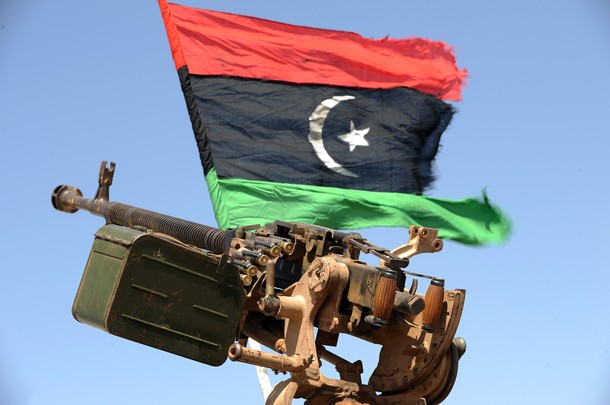
From Ben Farmer, the Telegraph: More than 6,000 miles away, deep in the lunar landscape of the Nevada desert, American specialists trained to their computer screens spotted unusual activity at around 7.30am in District Two. From their windowless bunker, lit by constantly flickering computer screens, the analysts directed their unmanned Predator drones to zoom in on the convoy as it picked up speed and headed west. Nato’s eyes were suddenly trained on Gaddafi’s convoy. . . .
High above Sirte the heavily-armed American USMQ1 Predator drones, which are piloted by satellite link and can provide surveillance or fire missiles in all weather, day and night, had been circling. . . .
One of the predator pilots had now received permission to attack the fleeing convoy.
Around 40 miles off the Libyan coast a Nato AWAC early-warning surveillance aircraft, flying over the Mediterranean, took control of the battle and warned two French jets that a loyalist convoy was attempting to leave Sirte.
As the convoy sped west, a Hellfire missile was fired from the Predator and destroyed the first vehicle in the convoy.
By now, the NTC troops had realised that the loyalists were escaping and a small number of lightly armed rebels began to give chase. . . .
British military sources have told The Sunday Telegraph that small teams of SAS soldiers on the ground in Sirte, armed but under strict orders not to get involved, had warned them throughout the siege to be alert to the fleeing of loyalists.
Assisted by other special forces – in particular the Qataris, with whom the SAS have a long relationship dating back 20 years – the SAS tried to impress on the Libyans the need to cover all escape routes.
But despite the advice, the breakout seems to have taken the rebels on the Zafran front completely by surprise. . . .
After the Hellfire missile struck its target, the convoy changed direction, possibly hoping to avoid a further strike, before heading west again. It had begun to fracture into several different groups of vehicles.
The French jets were also given permission to join the attack.
By now a group of 20 vehicles in the convoy had reached a point around three miles west of the city. The shattered streets had been left behind, and the convoy had halted next to a walled electricity sub station, in arid farmland dotted with breeze block compounds and trees.
Just then, the French pilot began his bombing run, seconds later releasing two 500lb GBU-12 laser-guided bombs, into the centre of the convoy.
The bombs unleashed massive force. Arriving at the site, a few hours later, their devastating power was clear to see: at least a dozen vehicles were shredded and burned out, while I counted more than 25 bodies, some lying twisted and charred inside the vehicles and others lying in clumps nearby.
The air strike marked the end of any attempt at an ordered retreat and the convoy’s remnants scattered. . . .
Col Gaddafi had survived the air strike, but was apparently wounded in the legs. With his companions dead or dispersed, he now had few options.
He and a handful of men, perhaps including the defence minister Abu Bakr Younis, appeared to have made their way 300 yards north from the devastation and taken shelter in a drainage culvert running under a dual carriageway.
Here in concrete pipes just three feet across the final scene would be played out.
Members of the Al Watan revolutionary brigade who had been following the convoy at a distance witnessed the explosion, but at that point still had no idea who was in the vehicles.
Saleem Bakeer, a rebel fighter who said he was among those who came across Gaddafi hiding in the pipes said they had approached on foot. . . .
Mobile phone footage shows Col Gaddafi alive but weak and bloodied, with blows raining down on him from frenzied fighters. At one point he was hauled onto the bonnet of a pickup truck, then pulled down by his hair. His weighty golden gun, intricately engraved and decorated with the words "The sun will never set on the Al Fattah revolution", was snatched by one of the revolutionaries. His satellite phone was seized, and it was later discovered that he had made one last call to Syria. (photo: Getty)
Image: getty%2010%2023%2011%20NTC%20flag.jpg
